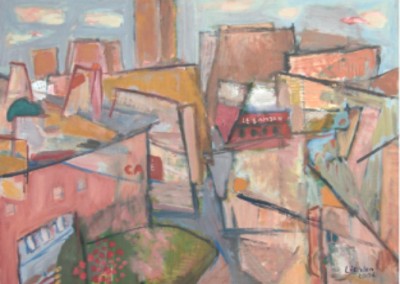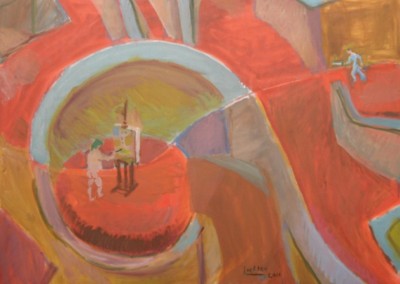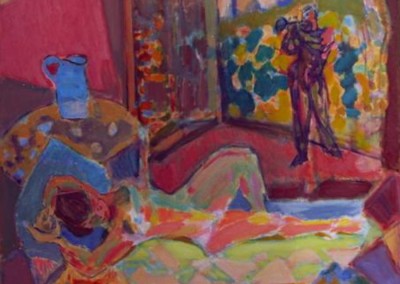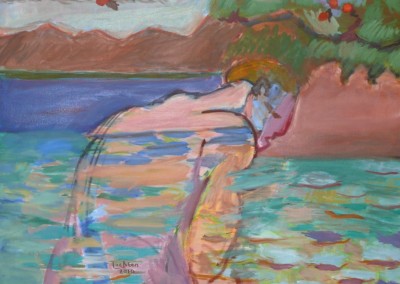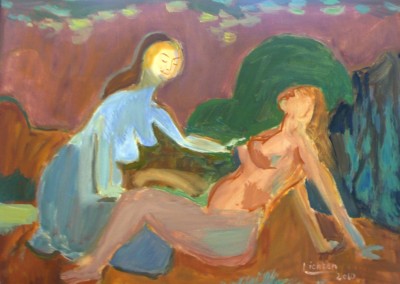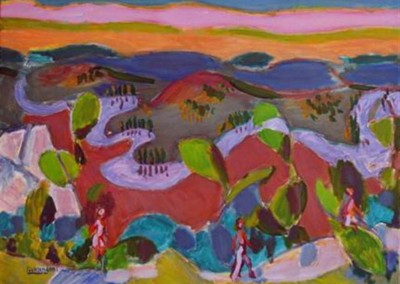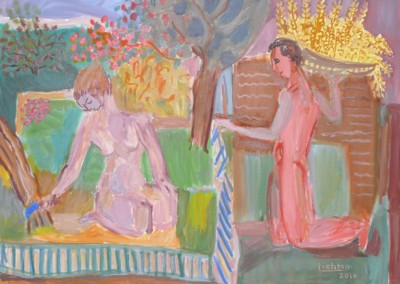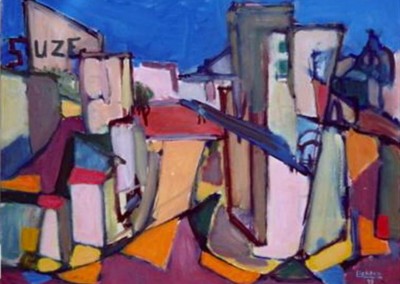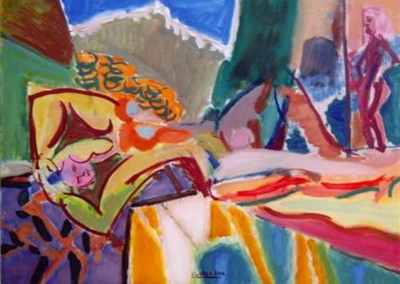Notice biographique : Albert LICHTEN Né à Paris, le 16 septembre 1931. Il vit et travaille à Paris D´abord élève des académies Julian, A. Lhote et Goetz, c´est à la Grande Chaumière (pépinière de tant d´artistes de renom) qu´au cours des années soixante, Albert Lichten reçoit l´enseignement du peintre abstrait Busse et de Gilet, qui privilégie les effets de matière. Il ne s´écarte pas de son orientation figurative initiale… Formation Picturale :1951-1953 : Académie Julian : classe préparatoire aux Beaux Arts. 1955-1963 : Académie André Lhote. Académie de la Grande Chaumière : Ateliers Aujame, Brayer (figuratifs) Atelier Busse, Gilet, Andersen (abstraits).
Principales expositions individuelles : 1976 Galerie Cambacérès, PARIS. 1990 Chez J.C. Bruhot, PARIS. 1993 Musée Duhamel, MANTES-la-JOLIE. 1994 Galerie Art Conseil, PARIS. 1996 Galerie Façade, PARIS-Galerie Etienne de Causans, PARIS. 1997 Association Freudienne Internationale, PARIS-Galerie Etienne de Causans, PARIS. 2003 Foyer Jeune Cordée, PARIS. 2005-11 Galerie La Capitale, Paris Principales expositions de groupe :1985-CIAC, PARIS,1992-CHICAGO, 1993- MUNICH.
Salons : Salon de l´Art Libre (1963-1964) – Salon des Indépendants (1966 à 1971). Salon d´Automne (1992, 1993, 1994 et 1996) – Salon des Artistes Français (1994). Salon des Artistes Présents (1996) – Lineart 2005 (Foire International de GAND) Publication : Albert Lichten : Le Signe et le tableau, éditions Honoré Champion 2004. Extraits : Des paysages et des natures mortes, compositions qui surgissent de la toile en couleurs fauves centrées généralement autour d´un bleu électrique, en touches comme sauvages, presque frustes, larges et puissantes, violentes quelquefois, le tout de beaucoup d´élan, de passion. Une exposition qui a « de la gueule ». Le peintre (Mensuel) Mai 1976. L´expo Albert Lichten au musée Duhamel : la rencontre du fauvisme et du cubisme (…) Du fauvisme, Lichten retient surtout le besoin de restituer émotions et sensations. S´il peint par exemple un nageur, Lichten ne cherche pas à faire de sa toile un « instantané» comme dans la photo, mais beaucoup plus une synthèse de mouvements et de moments, ceux que le nageur ressent quand il nage. (…)Les toiles cubistes sont intéressantes dans leur facture par leur façon d´exprimer une pluralité de points de vue. Si la réalité interdit qu´on puisse à la fois être à une fenêtre et se regarder passer, la magie du cubisme vous permet à la fois d´être ce personnage à la fenêtre et celui qui le voit figurer. Cette pluralité des points de vue se retrouve dans d´autres toiles comme le « Parc de Saint-Cloud », où la succession des caprices du terrain (montée, descente) est rendue ici par une simultanéité. D´autres toiles expriment les rapports du peintre avec sa toile lorsqu´il est à la fois regardant et regardé, ou la vénération du peintre pour le corps féminin vécu comme une «médiation entre l´homme et l´univers ».J.-M.G. [Paris Mantes Poissy quotidien 20 juillet 1993] *** He live and works in Paris Formerly student in Julian, Lhote and Goetz academies, it is at the Grande Chaumière (ground where developed so many famous artists), that during the sixties, Albert Lichten received the teaching of the abstract painter Busse, and from Gilet, who was keen on matter effects. He did not move away from his initial figurative trend (…) During the whole route of the painter, which will be like the oscillation of a pendulum, between colour and space construction, an obsession arises, many a time abandoned and every so often taken up again: to express in painting the elusive passing of time or its unexpected an unusual pause, and to do it in a figurative topic (…) Monique CHEFDOR “Landscapes and still lifes, compositions which spring up from the canvas in fawn colours, generally centered around an electrical blue, in strokes like savage, almost unpolished, large and powerful, sometimes violent ; the whole with much surge and passion. An exhibition which has an air about it. Le peintre (monthly – May 1976) “(…) From fauvism, Albert Lichten keeps above all the need of giving a plastic equivalent of emotions and sensations. For instance, if he paints a swimmer, Lichten does not try to make of his canvas a “snapshot”, like in photography, but much more a synthesis of movements and times, those that the swimmer feels while swimming (…) The cubist canvases are interesting in their way of expressing a plurality of viewpoints. As a matter of fact, reality forbids you to be at the same time at the window and to watch yourself passing; but the magic of cubism allows you to be the person at the window and also the one who sees him as a representation. That plurality of viewpoints can be found again in other canvases, such as the “Parc de Saint Cloud, where the succession of unexpected changes of the ground (ascent, slope) is rendered here by a simultaneity. Other canvases express the links between the painter and his canvas when he is both watching and being watched at; or the adoration of the painter for the woman’s body, considered as a “mediation between man and the universe” J.M.G.(Paris – Mantes – Poissy, diary, 20th of July, 1993) Albert LICHTEN : The expressive strength of clours (…)From cubism, the artist has kept the art of multiplying the viewpoints and the will of abstraction But abstraction does not mean plastic distortion for Lichten, as reveals this picture where birds fly over a lake. The painter endeavours always to suggest the unexpressible, the fragility of a moment. With the absolute mastery of colour, Lichten combines a perfect rhythmical construction. A treat! J. Delauney (Valeurs de l’art- monthly, may 1994)

